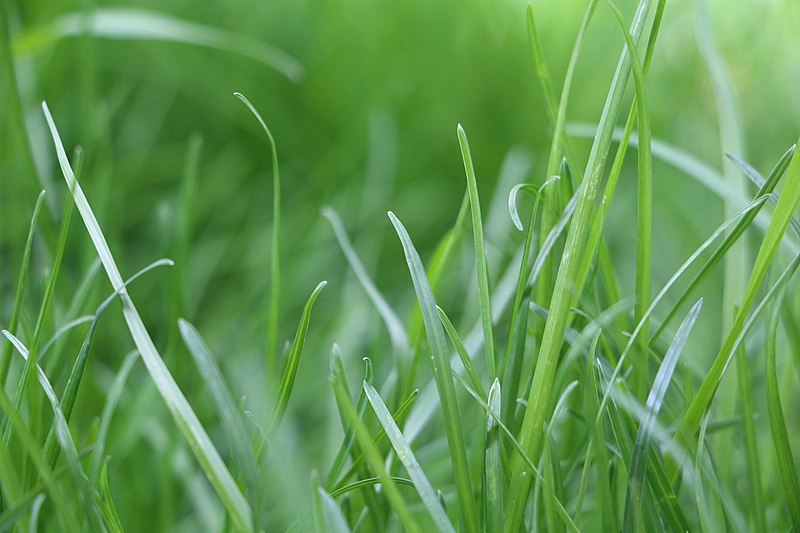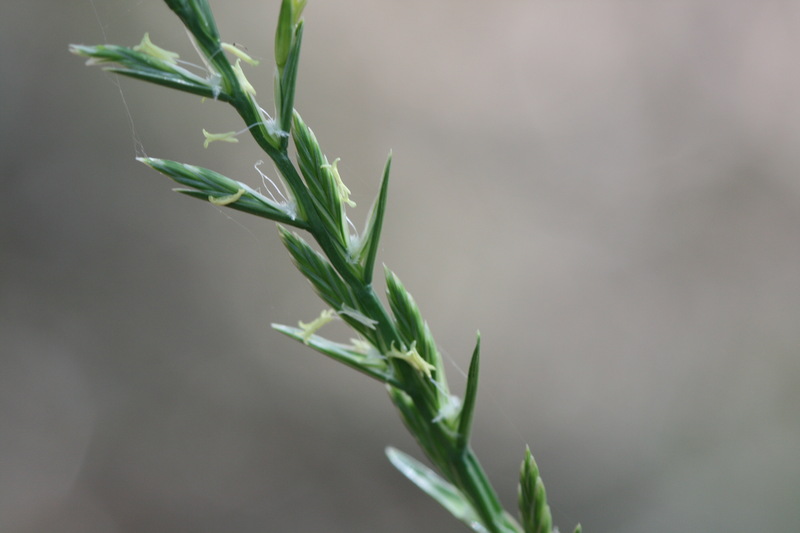4 Best Grass Types for Minnesota
BY ANDRÉA BUTLER | APRIL 29TH, 2023 | LAWN CARE, MINNESOTALiving in the North Star State, spending time outdoors becomes embedded in your lifestyle — from fishing on the Rainy River to snowshoeing along Gunflint Trail to hiking through Maplewood State Park. But your personal true north, at least when it comes to caring for your homestead, is designing a lawn as lush as all those nearby public green spaces. Achieve your landscaping ambitions by planting one of the best grass types for Minnesota, detailed below.
In this article, we’ll cover:
Warm-Season vs. Cool-Season Grasses
The difference between warm-season and cool-season grasses boils down to their distinct biologies, which cause them to complete photosynthesis in different ways. Specifically, the number of carbon atoms the grass type carries during photosynthesis determines the type of weather in which various grass types can grow.
Warm-season grasses contain four carbon atoms, meaning they can convert carbon dioxide into oxygen more easily in hot weather, favoring temps up to 95 degrees. Grasses under this classification typically grow from early summer through early fall, as they are drought-tolerant, lovers of full sun, and haters of frigid conditions.
Cool-season grasses contain three carbon atoms, making them best suited for temperatures between 65 degrees and 75 degrees. Their prime growing season is from late winter to early spring, as they are unbothered by frost and can withstand shade and colder weather. They also actively grow in autumn.
4 Cool-Season Grasses for Minnesota
While our summers are becoming increasingly warmer, it’s because of Minnesota’s cold winters that the only grass types that can flourish here are cool-season varieties.
1. Kentucky Bluegrass

Photo Credit: Pilot138-17 / Wikimedia Commons / CC BY-SA 4.0
A favorite of homeowners across Minnesota, Kentucky bluegrass is beloved for its thick, carpet feel; dark green, rounded blades; and blue-tipped seedheads. Germination of this grass species takes place through subterranean stems called rhizomes, which can also help repair the grass if it starts to suffer under heavy foot traffic.
This turfgrass has little tolerance for shade and delights in full sun — as long as it gets plenty of water. Periods of drought are not welcomed by Kentucky bluegrass, but it can survive just fine, falling dormant to protect itself. Of all the cool-season grasses, though, this choice is the best at withstanding the below-freezing temps Minnesota is known for.
To keep this high-maintenance turf in tip-top shape, be sure to seed, fertilize, aerate, dethatch, and use broadleaf weed control as needed between late summer and early fall.
Classification: Cool-season grass
Spreads by: Rhizomes
Shade tolerance: Low
Drought tolerance: Moderate
Foot traffic tolerance: Moderate
Maintenance needs: Moderate mowing frequency and high fertilization needs
Mowing height: Between 2.5 and 3.5 inches
Potential for disease: Moderate to high; prone to several diseases, such as dollar spot, leaf spot, necrotic ring spot, summer patch, and stripe smut
Soil pH: 6 – 7.5
Soil type: Performs best in well-drained, heavy soils with high fertility
Other notes: For homeowners living in the Northeast region and Northwest region, an assorted mix of Kentucky bluegrass seed and turf-type tall fescue or perennial ryegrass thrives best; available premixed and bags are typically marked “Northern mixture”
2. Fine Fescue
Rather than a single grass species, fine fescue is actually an umbrella term for a variety of grass types — from creeping red fescue to Chewings fescue to hard fescue to sheep fescue — and each one grows differently, depending on the surrounding conditions. For example, hard fescue and sheep fescue grow best in full sun, while Chewings and creeping red fescue grow really well in shaded areas. Variation is also seen in color, with hues ranging from dark green to light green to blue-green, contingent on type.
Unlike Kentucky bluegrass, fine fescue loves shade; sandy, rocky, and clay-based soils; is salt-tolerant, and is super low-maintenance — and eco-friendly, as its manual water needs are virtually nonexistent. Area rainfall should more than suffice, and even if a drought comes along, this grass species will be just fine; although, it may go dormant and turn brown.
Made up of pointy, but soft, narrow blades that feel smooth to the touch, fine fescue is a barefoot-friendly lawn grass. And while it’s not a fan of heavy foot traffic (think kids and pets regularly running around and playing on it), your lawn should be totally fine for average use.
Classification: Cool-season grass
Spreads by: Creeping red fescue spreads by rhizomes, while other fine fescues are bunch-type grasses, such as Chewings, hard, and sheep fescues.
Shade tolerance: Moderate to high, depending on species
Drought tolerance: Moderate to high, depending on species
Foot traffic tolerance: Low to moderate, depending on species
Maintenance needs: Low fertilizer and mowing needs
Mowing height: Between 2.5 and 4 inches, depending on species
Potential for disease: Moderate; common diseases include red thread, leaf spot, dollar spot, summer patch, and powdery mildew
Soil pH: 6 – 6.5
Soil type: Will not perform well in wet soil conditions; prefers drier soils and tolerates a wide range of soil types and fertility
Other notes: Grows well in all regions (Northwest region, Northeast region, Central region, the Metro, Southwest Region, South Central region, and Southeast region), especially when mixed with varieties of fine fescues or with other cool-season grasses
3. Turf-Type Tall Fescue
Finer than traditional tall fescue (which doesn’t hold up as well in Minnesota winters), this grass species isn’t troubled by heavy foot traffic or drought because of its deep roots. Identified by its emerald green color and coarse texture, turf-type tall fescue is another low-maintenance option and can thrive in either full sun or partial shade.
Turf-type tall fescue is available to grow bunch-style or with rhizomes and has low water and fertilization needs. Plant as a combination of various turf-type tall fescue cultivars and expect an even deeper root system with stronger drought and disease resistance. You can also blend this type with Kentucky bluegrass and perennial ryegrass.
Classification: Cool-season grass
Spreads by: Bunch-style growth habit or rhizomes, depending on variety
Shade tolerance: Moderate; grows well in partial shade and full sun
Drought tolerance: Moderate to high
Foot traffic tolerance: Moderate to high
Maintenance needs: Weekly mowing; low water and fertilization needs
Mowing height: Between 2 and 4 inches
Potential for disease: Tolerant of most diseases when properly maintained; use fungicide to fight brown patch
Soil pH: 5.5–7.5
Soil type: Dry, sandy soil
Other notes: Grows well statewide. Most cold hardy in the Southeast region.
4. Perennial Ryegrass

Photo Credit: Arthur Chapman / Wikimedia Commons / CC BY-2.0
There’s a semi-quick fix for those bare patches and thinning areas bringing down the aesthetic vibe of your lawn — perennial ryegrass. Quick with the germination process, this fast-growing grass, which spreads via vertical “tillers,” produces a bunch-style growth with wide blades, a dark green hue, and a glossy sheen. While you can plant it on its own, experts suggest combining it with other cool-season grasses, such as turf-type tall fescue or Kentucky bluegrass.
It’s not the most cold-hardy or drought-resistant of the cool-season grasses, but it does boast some salt tolerance and can withstand heavy foot traffic. This sun-loving grass should be planted in well-drained, fertile soil and must receive regular watering.
Classification: Cool-season grass
Spreads by: Bunch-type growth habit
Shade tolerance: Low
Drought tolerance: Low
Foot traffic tolerance: High
Maintenance needs: Moderate mowing and fertilization requirements; thatch is not significant
Mowing height: Between 1.5 and 2.5 inches
Potential for disease: High; common diseases include gray leaf spots, red thread, and leaf spot/melting-out
Soil pH: Can grow in soils with a pH between 5 and 8 but prefers between 6 and 7
Soil type: Prefers good drainage and fertility but can tolerate some poor drainage
Other notes: One of the best grass seeds for Northwest and Northeast regions; higher quality output.
FAQ About Minnesota Grass Types
Overseeding is just what it sounds like — planting seeds over grass that already exists. This is done to fill in bare and thinning spots to produce a thicker, lusher lawn. In the Metro, as well as in other regions of our state, the best time to overseed is in the fall. The lack of extreme temps this time of year will allow optimal germination for the new seeds.
Now that you know the best grass seed to use on your lawn, let’s take a look at the ones you should avoid. When it comes to warm-season grasses, including bermudagrass and Zoysia, none are a fit with Minnesota’s climate.
And while perennial ryegrass is a nice pick for these upper midwestern temps, annual ryegrass is, well, not so much. The latter does not recur like its perennial sister, so it’s usually only used as a temporary cover.
Transforming your yard from traditional lawn to prairie is another sustainable option. In this scenario, you’d use native ornamental grasses as an alternative to turfgrass. Benefits of prairie lands include diverse flora and fauna and low-maintenance landscaping. Here are a few native grasses to use:
• switchgrass
• big bluestem
• Canada wildrye
• blue grama
• prairie dropseed
• yellow-fox sedge
• bottlebrush grass
Choose Plant and Grass Varieties for Your Minnesota Landscape
Your selection of turfgrasses, ornamental grasses, and native plants should take into account the growing conditions of your yard: Is it shade- or sun-heavy? Is the soil rich and fertile or dry and sandy? What about the hardiness zone, maintenance commitment, and types of wildlife you’d like to attract?
If you still have absolutely no clue where to start, hit up spots like Afton State Park and Roscoe Prairie Scientific and Natural Area for inspiration. Need to hire a Minnesota lawn care pro near you to maintain the yard’s new turf? Connect with trusted pros in Minneapolis and many more cities across the state.
Main Photo Credit: Minnesota Office Building / Ken Lund / Flickr / CC BY-SA 2.0